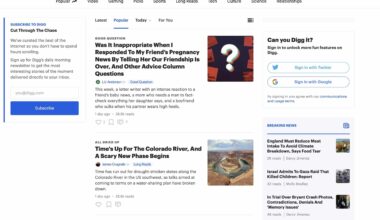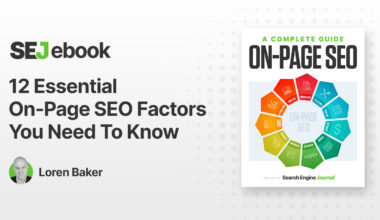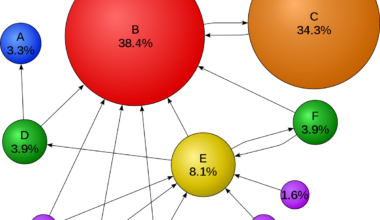Introduction to SEO for YouTube Videos
As a content creator on YouTube, it’s not enough to just upload videos and wait for viewers to find them. Search Engine Optimization (SEO) is crucial to help your videos rank higher in search results and get discovered by potential viewers. SEO for YouTube videos involves optimizing your video titles, descriptions, tags, and categories to make them more discoverable and appealing to both viewers and search engines.
YouTube is the second largest search engine after Google, with more than 2 billion monthly active users. This means that if you’re not optimizing your videos for search, you’re missing out on a massive potential audience. SEO for YouTube videos can help you get more views, subscribers, and engagement on your channel, which can lead to more revenue and growth opportunities.
Optimizing your videos for search involves a combination of keyword research, optimizing titles and descriptions, utilizing tags and categories, and encouraging engagement and sharing. In this article, we’ll dive into each of these aspects of YouTube video SEO and provide tips and best practices for optimizing your videos for search. By following these tips, you can improve your chances of getting discovered by viewers and growing your audience on YouTube.
Importance of Keyword Research
Keyword research is a critical aspect of SEO for YouTube videos. It involves finding the right keywords or phrases that people use to search for videos related to your content. By using the right keywords, you can make it easier for people to find your videos and increase your chances of ranking higher in search results.
Here are some tips to help you with keyword research for your YouTube videos:
- Use free keyword research tools like Google Keyword Planner, YouTube Autosuggest, and Ubersuggest to find relevant keywords and phrases related to your content.
- Focus on long-tail keywords that are specific to your niche. These are more targeted and have less competition, which can help you rank higher in search results.
- Pay attention to search volume and competition for each keyword. Choose keywords that have a good balance of search volume and low competition.
- Consider adding your target keyword in your video title, description, tags, and even in your video content.
- Keep an eye on the performance of your videos in YouTube Analytics and adjust your keyword strategy accordingly.
By doing proper keyword research, you can optimize your videos for the right keywords and increase your chances of getting discovered by potential viewers. It’s important to remember that SEO for YouTube videos is an ongoing process, and you need to keep refining your keyword strategy to stay ahead of the competition.
In the next section, we’ll discuss how to optimize your video titles and descriptions for better SEO.
Optimize Video Titles and Descriptions
Optimizing your video titles and descriptions is crucial for SEO on YouTube. These elements are the first things that viewers see when they come across your video in search results or on your channel page. A well-crafted title and description can entice viewers to click on your video and watch it, which can lead to more views, engagement, and subscribers.
Here are some tips for optimizing your video titles and descriptions for better SEO:
- Use your target keyword in your video title, preferably at the beginning. This helps YouTube understand what your video is about and increases the chances of it appearing in relevant search results.
- Keep your titles concise, clear, and attention-grabbing. Use power words, questions, or numbers to make your title more appealing to viewers.
- Use your video description to provide more context about your video and include relevant keywords and phrases. The first few lines of your description are especially important, as they appear above the fold and can entice viewers to click on your video.
- Include links to relevant content in your description, such as your website or social media channels. This can help drive traffic to your other online properties and increase engagement with your brand.
- Use tags to provide additional information about your video and help YouTube understand its content. Use specific, relevant tags that are related to your video’s topic and target keywords.
When optimizing your video titles and descriptions, it’s important to strike a balance between SEO and viewer appeal. Your titles and descriptions should be optimized for search, but also be engaging, informative, and relevant to your target audience. By following these tips, you can improve your chances of ranking higher in search results and getting more views on your YouTube videos.
Utilize Tags and Categories
Tags and categories are important elements of YouTube video SEO that can help your videos get discovered by relevant viewers. Tags are keywords that describe the content of your video, while categories are broad topics that your video falls under. By using tags and categories effectively, you can make it easier for viewers to find your videos and increase your chances of ranking higher in search results.
Here are some tips for utilizing tags and categories for better SEO on YouTube:
- Use specific, relevant tags that accurately describe the content of your video. Avoid using generic or misleading tags that don’t accurately reflect your video’s content.
- Include your target keyword in your tags, but also include related keywords and phrases that viewers might use to search for videos like yours.
- Use as many tags as you can, up to a maximum of 500 characters. This can help YouTube understand the content of your video and show it to relevant viewers.
- Use categories to help viewers find your videos based on broad topics. Choose the most relevant category for your video, but also consider adding secondary categories if applicable.
- Keep an eye on the performance of your videos in YouTube Analytics and adjust your tags and categories accordingly. If certain tags or categories aren’t performing well, try changing them to more relevant ones.
By utilizing tags and categories effectively, you can make it easier for viewers to find your videos and increase your chances of ranking higher in search results. It’s important to remember that tags and categories should accurately reflect the content of your video, and not be used for misleading or spammy purposes.
In the next section, we’ll discuss how to encourage engagement and sharing on your YouTube videos for better SEO.
Encourage Engagement and Sharing
Encouraging engagement and sharing on your YouTube videos is an essential part of SEO for YouTube. The more engagement your videos receive, the higher they will rank in search results. Engagement includes likes, comments, shares, and subscriptions. When viewers engage with your videos, it signals to YouTube that your content is valuable and relevant, which can lead to higher rankings in search results.
Here are some tips for encouraging engagement and sharing on your YouTube videos:
- Ask viewers to engage with your video in your call-to-action (CTA). This can be as simple as asking them to like, comment, or share your video.
- Respond to comments on your videos to encourage more engagement and build a rapport with your viewers. This shows that you value their feedback and encourages them to continue engaging with your content.
- Use YouTube’s Community tab to share updates, polls, and other content with your subscribers. This can help keep your audience engaged and encourage more interaction with your channel.
- Collaborate with other YouTubers in your niche to reach new audiences and encourage cross-promotion of each other’s content. This can help increase engagement and reach on your videos.
- Share your videos on social media channels, such as Twitter, Facebook, and Instagram, to reach a wider audience. Encourage your followers to engage with your videos and share them with their own followers.
By encouraging engagement and sharing on your YouTube videos, you can increase your chances of ranking higher in search results and reaching a wider audience. It’s important to remember that engagement should be authentic and valuable, and not incentivized or spammy. By creating high-quality content that resonates with your audience, you can build a loyal following and increase engagement over time.
In the final section, we’ll summarize the key takeaways from this article and provide some final thoughts on YouTube video SEO.
Final Thoughts on YouTube Video SEO
SEO for YouTube videos is an ongoing process that requires consistent effort and optimization. By following the tips and best practices outlined in this article, you can improve your chances of ranking higher in search results and getting more views on your videos.
Here are some key takeaways to keep in mind when optimizing your YouTube videos for search:
- Keyword research is crucial for understanding what your audience is searching for and optimizing your videos accordingly.
- Optimizing your video titles and descriptions can increase your chances of appearing in relevant search results and attracting more viewers to your content.
- Utilizing tags and categories can help YouTube understand the content of your videos and show them to relevant viewers.
- Encouraging engagement and sharing on your videos can signal to YouTube that your content is valuable and relevant, which can lead to higher rankings in search results.
Remember that SEO for YouTube videos is just one part of growing your channel and reaching a wider audience. It’s important to create high-quality content that resonates with your target audience, and to engage with your viewers in a meaningful way.
By staying up-to-date with the latest trends and best practices in YouTube video SEO, you can improve your chances of growing your audience and achieving success on the platform. Good luck, and happy optimizing!






















